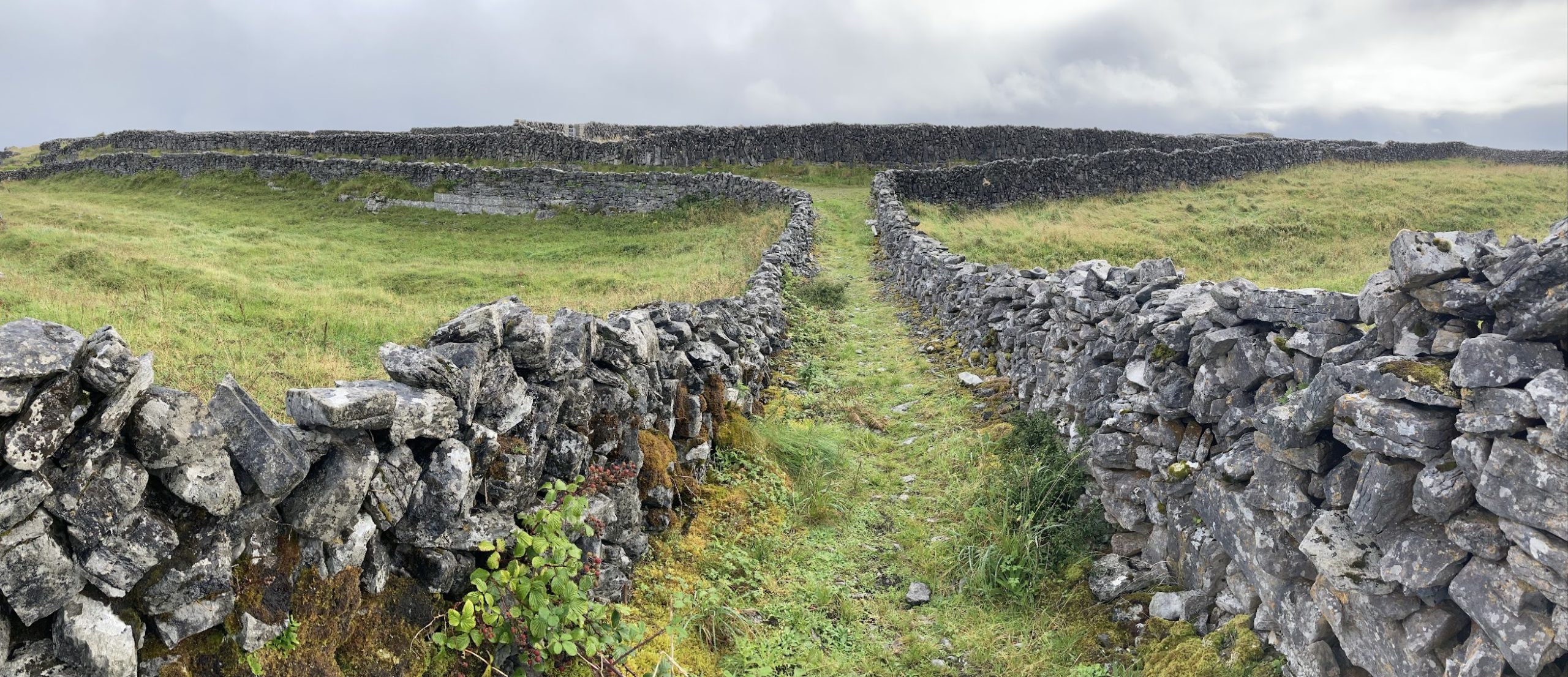
I actually welcomed my first visitor from the states in September, lo these 14 months since moving to the ould sod in the middle of a pandemic! My intrepid brother TJ braved two airports and mass transportation on either end to travel from Maine to my County Clare home. We spent 10 days together, didn’t revert to childhood form, were cordial and considerate adults as well as friends. I took him to the Cliffs of Moher, the Burren, holy wells, village walks, local places I’ve written about in past blogs. It was wonderful to bring my sibling to some of the sites and paths that have come to mean so much to me. But we also traveled further afield to the island of Inishmore, the largest of three that comprise the Aran Islands, along with Inisheer and Inishmaan. It was my first time on the island and in this blog, I’d like to dwell there with TJ for a bit.
I have visited a number of prehistoric places on the mainland, some known to date back to as much as 5,000 BCE, but I’ve never been anywhere that feels as ancient as Inishmore. Perhaps that’s because all the history of Ireland seems concentrated in one place – the pre-Christian, the early Christian, the farming, the fishing, the fortifications, stitched together by a maze of stone walls that scatter the landscape. This sense of ancient place seeps into the psyche. You can almost see the ghosts of the clachans, or villages, that were found everywhere on Inishmore – two to 15 houses grouped together around farmland, and a defining feature of the pre-famine Aran Islands. We found a rapidly deteriorating, long-abandoned thatched roof cottage that seemed in its own way more congruous to the land than the modern houses that today dot the island. Too, you could feel the presence of those who have fished the waters there for time out of mind in their currachs – a rowboat unique to the west coast of Ireland and the mode of transportation between the islands and the mainland, too. TJ spotted the modern equivalent of a currach stored outside on sawhorses, and we investigated the long, wide, plank-built, square stern vessel. With the memory of our recent rollicking ferry trip still fresh in my mind, I appreciated all the more the fortitude of those who rowed their currachs over the open seas for sustenance and trade.
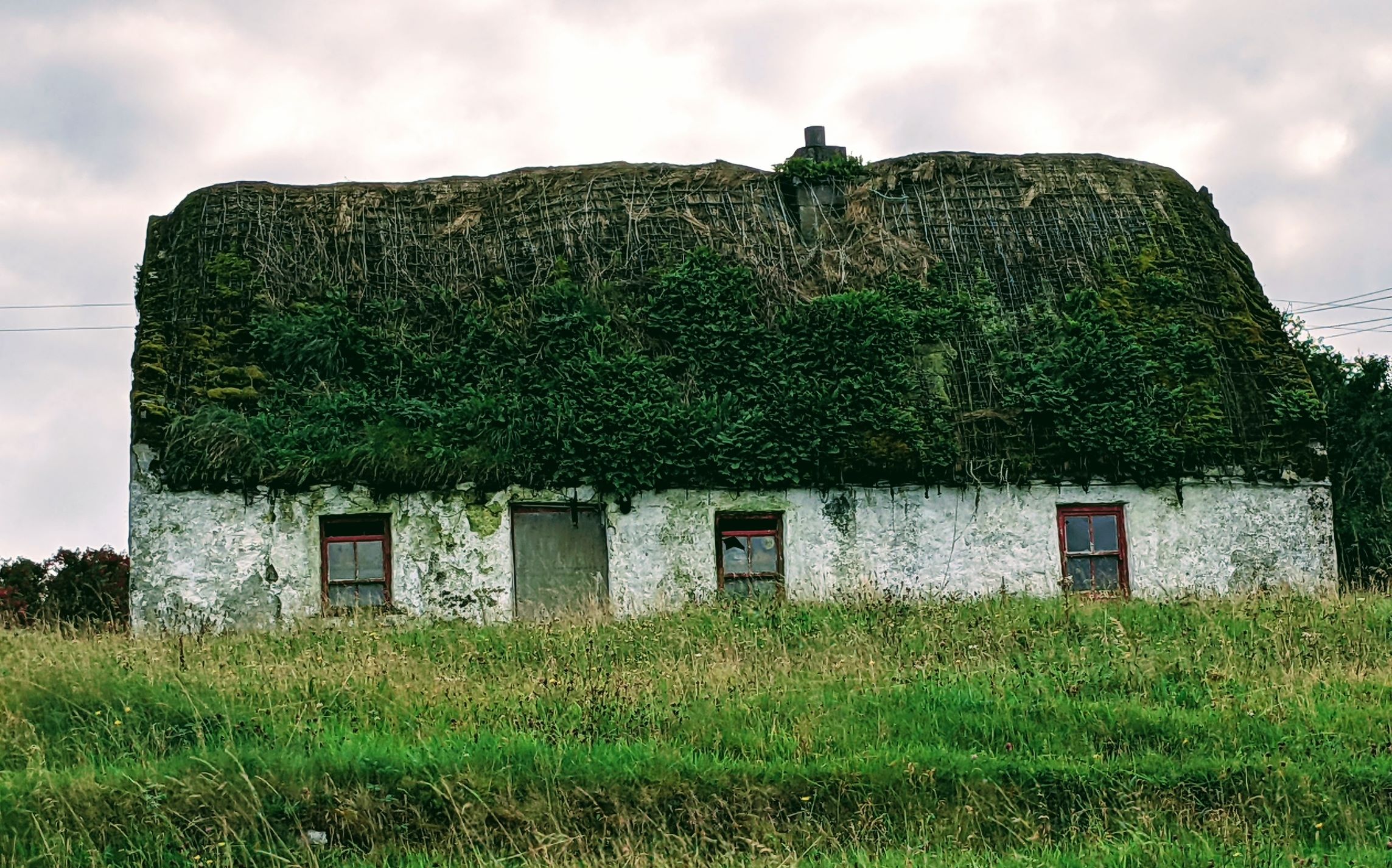
Then, tucked here and there among the hills, between the ubiquitous limestone walls, even in the back yards (the gardens) of homes, are the ruins that are everywhere in profusion here. As you all should be familiar with my archaeological proclivities by now, you will likely not be surprised that this was intriguing territory for me. The Aran Islands were believed to have been settled as long ago as 4,000 BCE, during earth’s Neolithic period, and its inhabitants perhaps not surprisingly began building stone forts (duns in Irish) in the hills and along the cliffs to protect them from mainland invaders. The most astonishing of these on Inishmore is Dun Aonghasa, built sometime between 3000 and 1300 BCE. This fort encloses 14.5 acres in three semi-circular walls made of dry-stone construction, built along a cliff’s edge. As so often happens to me in Ireland, I found myself nonplussed by such age. Truly, you feel as if you have been transported in time to some ancient, mystic, mythical place when you’re there. I could almost feel the presence of a druid performing ritual. And the cliffs, while not quite as majestic as the Cliffs of Moher, are nonetheless awesome and endless. TJ lay flat on the ground, peering his head over the cliffs, the better to take a few photos. A young woman joined him not far away. At one point, he said, they both raised their heads at the same moment, broad smiles on their faces, and their eyes met as they communicated their unabashed joy. Magical indeed!
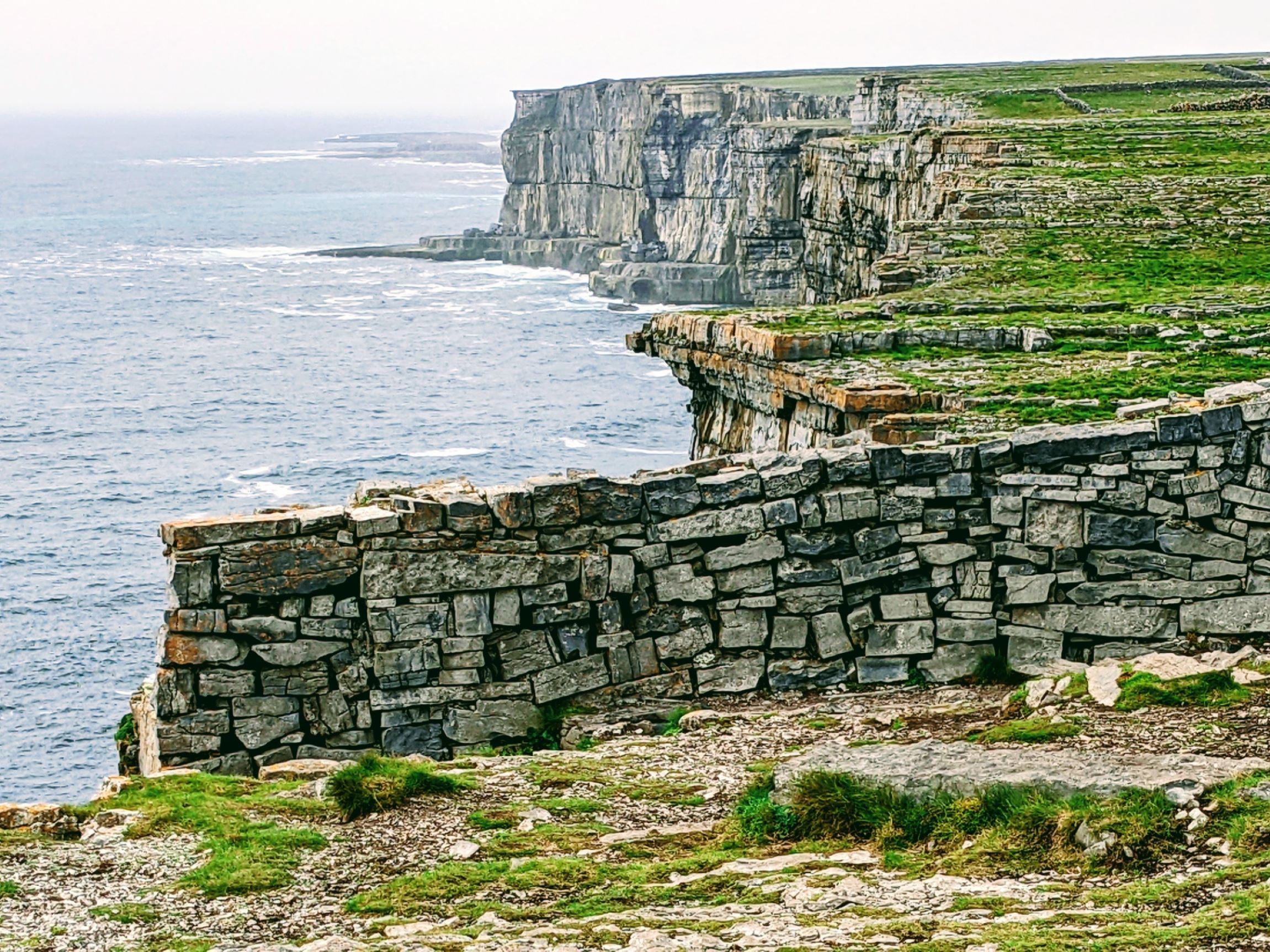
You could virtually spend all day, or the better part of three days as we did, traveling from one site to another to another on Inishmore. There are so very many and we saw hardly more than a handful. Perhaps you will indulge me one more island tale. Catholic monks contemporary with Patrick arrived on the islands in the 5th century CE, and settled all over the place – no doubt drawn by the remote ruggedness that must have seemed ideal for a completive life. The most important of these was Enda (a name still in use today in Ireland), the patron saint of the islands. It is no surprise that Inishmore has a number of monastery ruins attributed to Enda and other early Catholic settlers – at least those that weren’t trounced and destroyed by Oliver Cromwell’s soldiers in the 17th century. Apparently, they didn’t even spare the Aran Islands in Cromwell’s zeal to stomp out Catholicism in Ireland. We visited a number of these places, including Na Seacht dTeampaill – The Seven Churches, although today only two exist – and Teampall Bheanain, Benan’s Church, a tiny oratory so named for a monk who was a disciple of Patrick’s and died in 468. 468! So when I say Inishmore is the Irish culture in microcosm, it’s true. I wrote in my blog on holy wells about syncretism, the blending of two religious and cultural traditions — in Ireland’s case, the pagan and the Christian. To me, this is nowhere more evident on one place than on Inishmore.
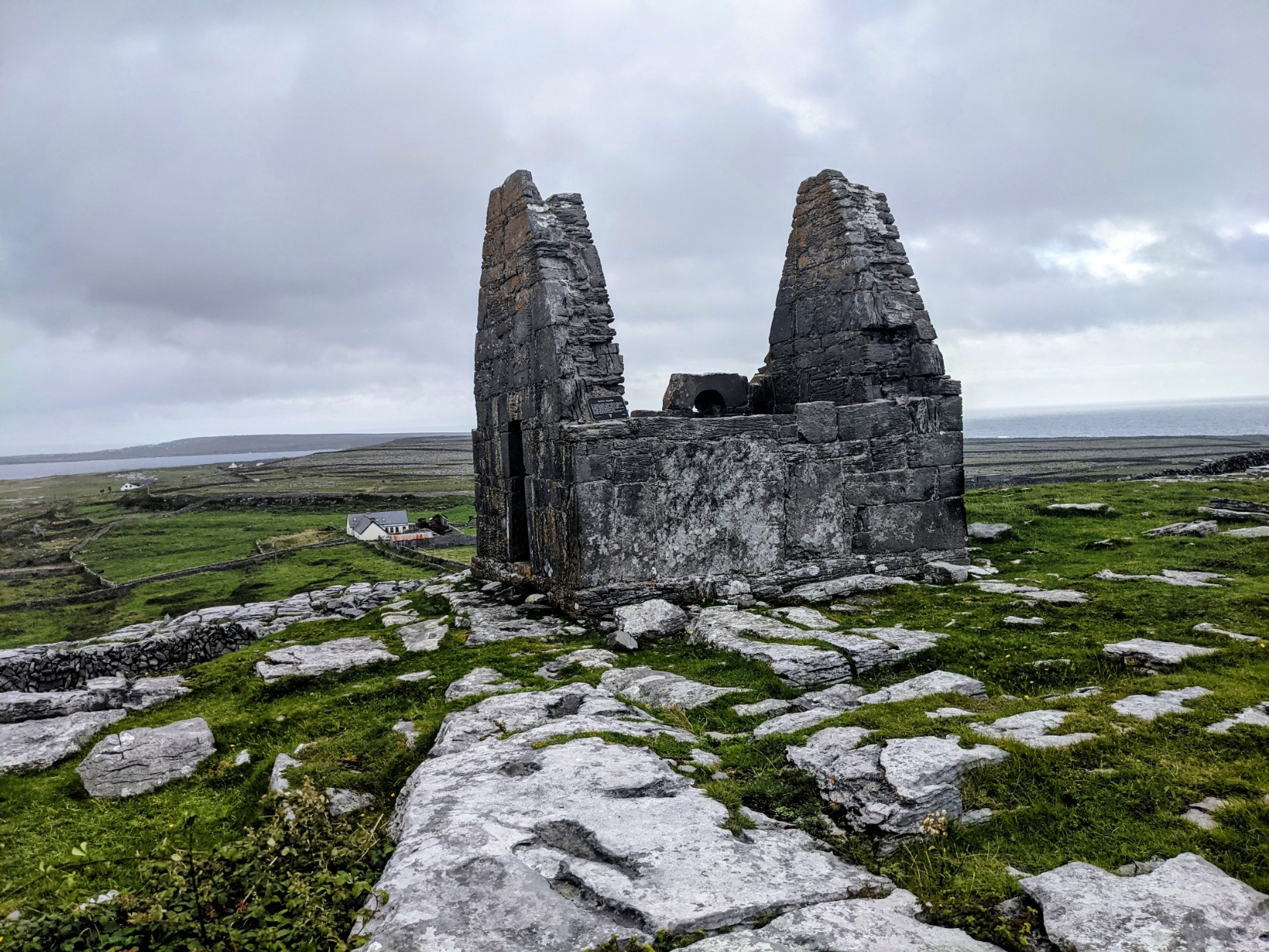
Inishmore is, of course, more than ancient sites. How could one possibly visit an Aran island and not talk about its knits and wools. Although islanders had long been making woolen garments, sweater knitting was apparently first codified, so to speak, around 1890. That’s when representatives of a British governmental organization called the Congested Districts Board, formed to mitigate poverty in the west of Ireland, first came to the islands. (Further digging into the roots of this board indicate it was formed to show a “gentle” side to England and thus deter the Irish from Home Rule.) Apparently, fishermen and their wives from the British Isles taught modern fishing practices – as well as how to knit their woolen water-resistant sweaters for an export market. Aran islanders adapted these knitting practices to incorporate their own thicker, unbleached yarn and their own patterns. Aran stitches include the diamond stitch, representing success and wealth; the Tree of Life, representing the hope of Aran Islanders for family unity; the honeycomb, representing hard work; and the plaited cable, representing the interweaving of family life. No surprise that a strong family would be very much desired on a small island. By the 1940s, apparently the knitting patterns became widely available, adding to the sweater’s cache. I personally found it interesting that the sweater’s popularity internationally skyrocketed when the Irish musicians the Clancy Brothers and Tommy Makem started wearing them. In my 20s and 30s, I was a big fan of Liam Clancy and Tommy Makem (who lived most of his life in Dover, NH, not far from my hometown in the states). In any event, and not surprisingly, today the Aran sweater is largely machine knitted. But the traditional patterns can still be found in the sweaters (or jumpers, as the Irish call them) for sale in the shops on Inishmore. And if you are a knitter, there’s also tons of yarn to chose from.
Ferries to the islands leave from Rossaveel in Connemara, County Galway or from Doolin, which is about half an hour away from where I live in County Clare and where we departed. I will tell you that I do get seasick and I will also tell you that the ferries from Doolin are apparently sometimes canceled in the off season due to ocean conditions. That didn’t happen to us, however it was quite the heaving sea that greeted us going and coming. I found if I just watched the horizon, though, I was fine – a trick I learned years ago when I once dated a racing sailor! TJ, meanwhile, has been known to crew sailboats in stormy waters so he was quite fine. Visitors are not allowed to bring cars, though islanders have them, so really the only way to get around is by bicycle. TJ suggested we splurge and get electric bikes instead of conventional ones. He owns an electric bike and says he’ll never go back. At €40 vs. €15 a day, it was indeed a splurge but I must say, well worth it. The island’s roads can be moderately hilly, and it was a dream to simply push a button and zoom around heedless of the topography. I declare myself smitten, and dreamed of the travel I could undertake around Corofin! But the price tag is substantial here in Ireland where everything has to be imported — $1,500 to $3,000 for neophytes like me, more if you’re really into biking. So for now, a dream…
A final note about COVID and travel. It is pretty darned easy these days to fly from the US to Ireland, if you’ve a notion and you’re fully vaccinated. In fact, all you need is your vaccine certificate to travel here. Going back, you will need to take an antigen test 72 hours prior to travel. Really, that’s it. Having said that, it wasn’t clear to TJ at all that he would make this journey, right up until the week before he got on the plane. In early September, Ireland had the highest 14-day COVID 19 incidence rate of anywhere in Europe, at 504 cases per 100,000. Not very comforting for someone who scrupulously follows all precaution measures, as TJ does. But as Irish residents lined up to be vaccinated, that situation changed in very short order. As of the end of September, Ireland now has a 14-day incidence rate of 378 per 100,000 and has dropped to 11th place among European countries. This is no small part because 90.5 percent of Ireland’s residents are now fully vaccinated – second in numbers only to Iceland at 90.7 percent. (Parenthetically, and as I explained to TJ, the counties bordering Northern Ireland, part of the fabled United Kingdom with its soaring COVID rates, skew the numbers in the Republic. Border counties hover between 550 and 1,000 cases per 100,000; County Clare, by contrast, is around 235.)
We still wear masks inside just about everywhere, and every store has a hand sanitizer station. But restaurants are open, music is playing, festivals are coming back, and life feels – dare I say it – approaching normal. Happily, this means that I can start to enjoy Plan B of my move to Ireland – traveling to mainland Europe. I will make my first foray in just a few weeks when I head to Portugal, my 70th birthday present to myself. So stay tuned, folks! The wander of wanders is set to begin…
***
In case you’re interested, click on the links to visit the websites of the shops on Inishmore: Aran Islands Knitwear; Aran Islands Sweaters; Aran Sweater Market. As the signs in their shops say clearly: shipped worldwide!

And here’s a few more images:
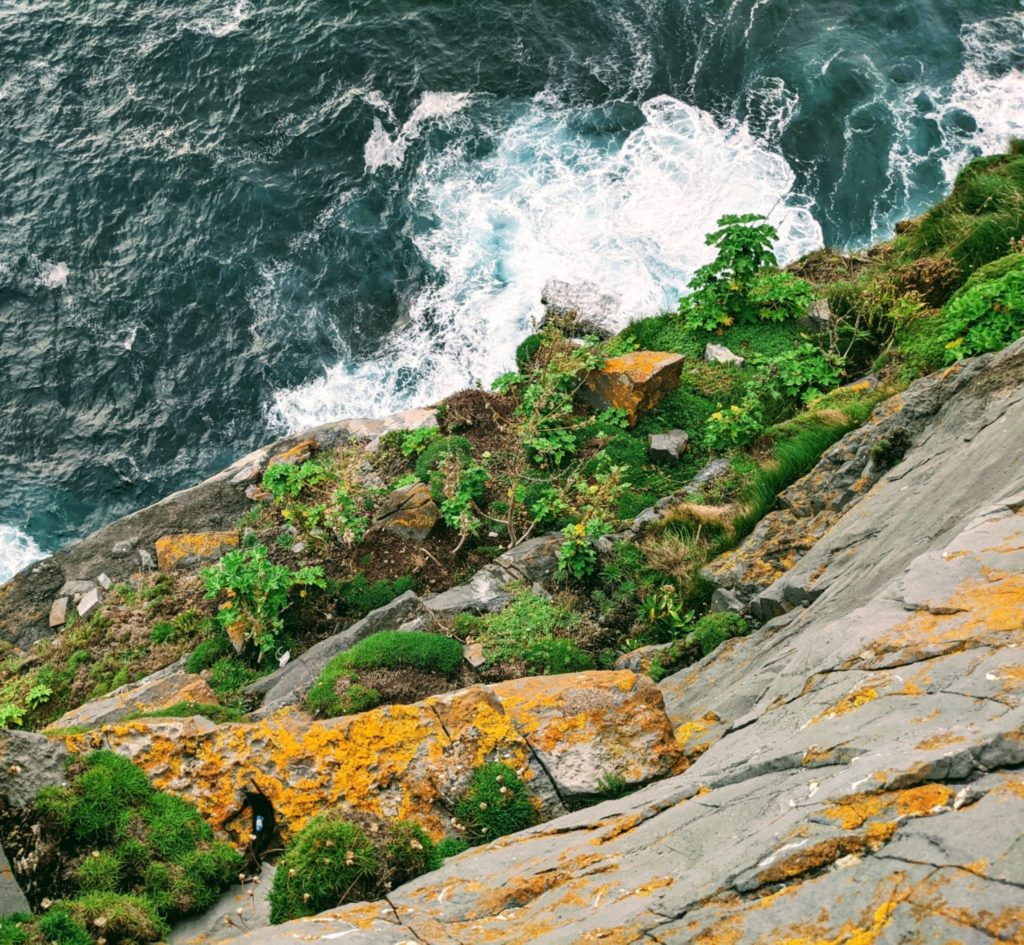
Plants cling to the edge of the cliffs while water surges below 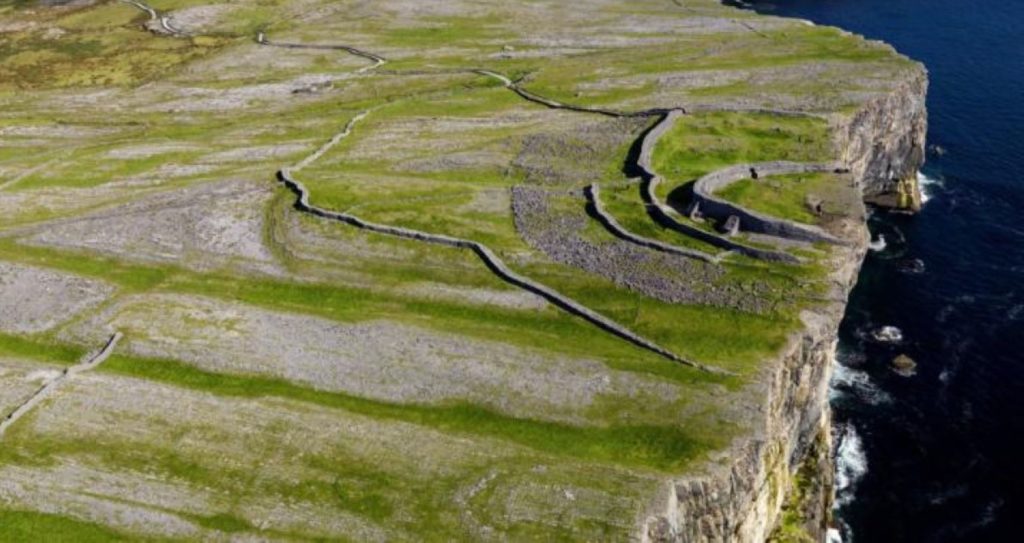
Aerial view of Dun Aonghasa 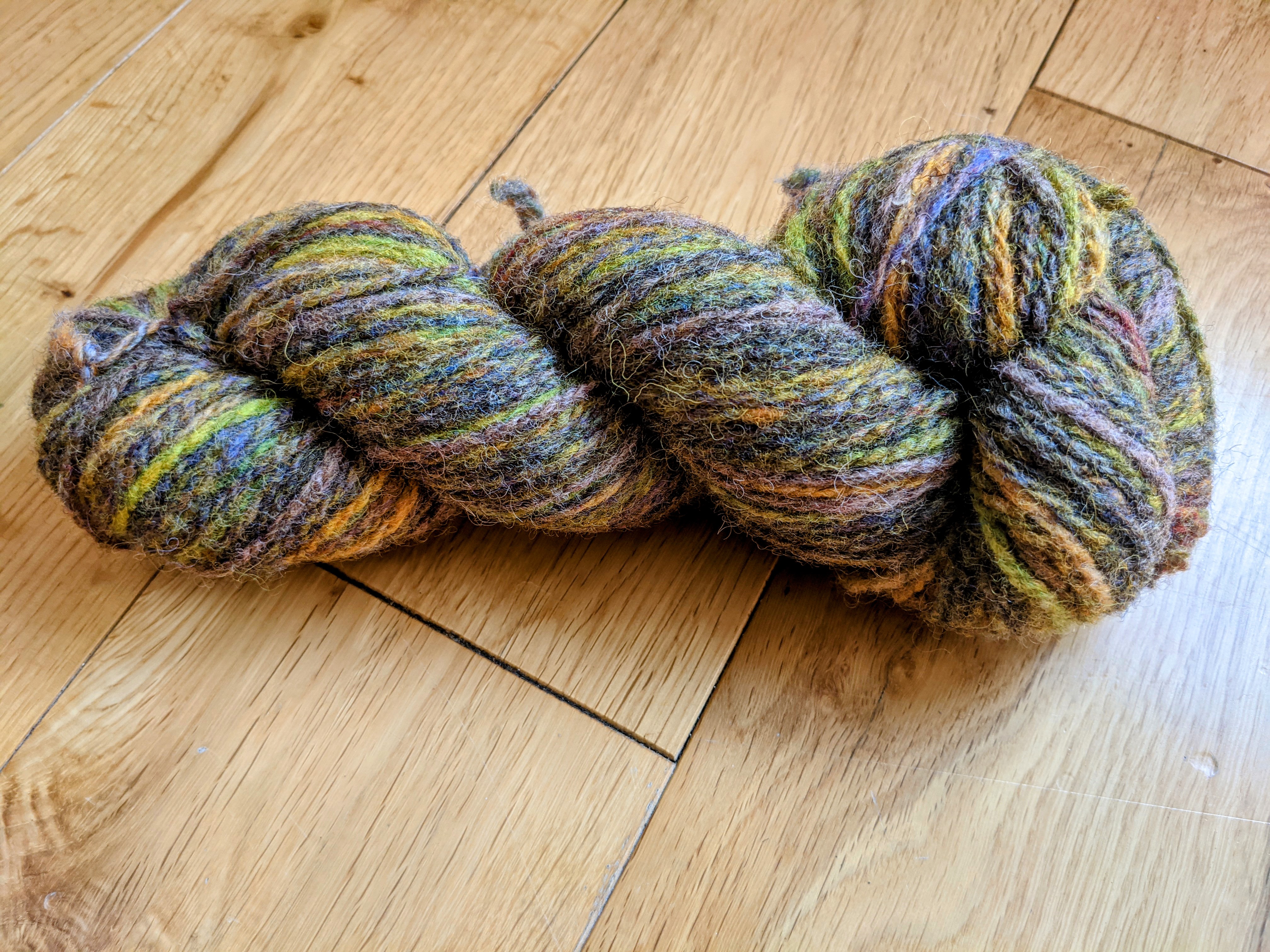
Look at those colors! 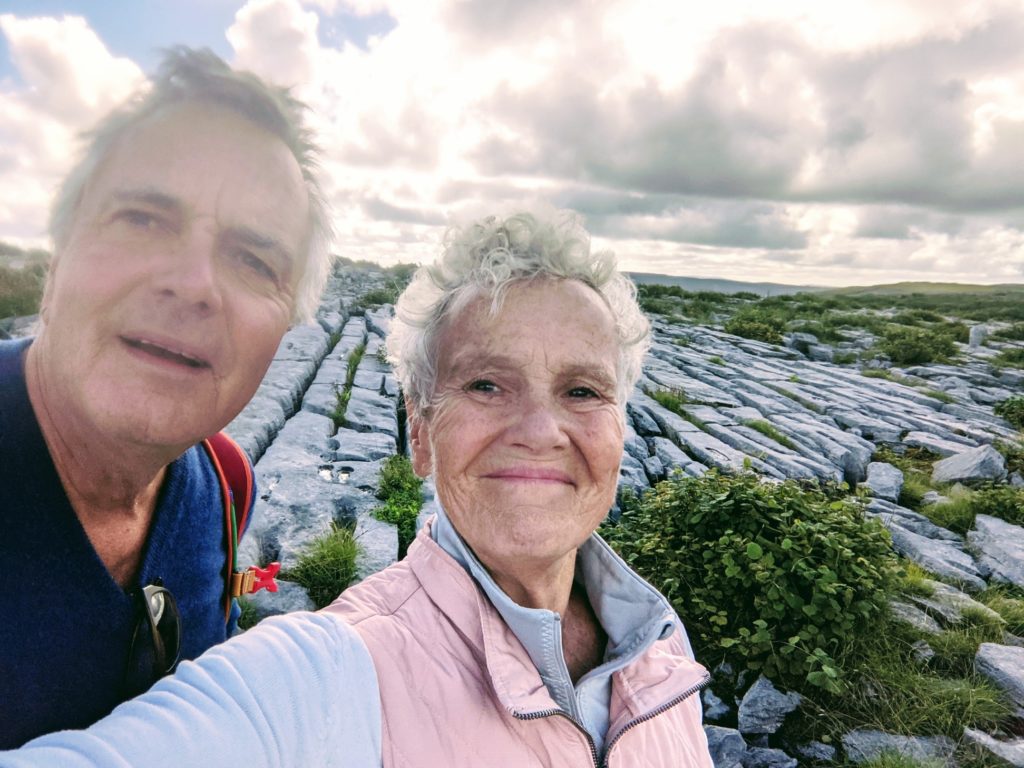
TJ and Deborah 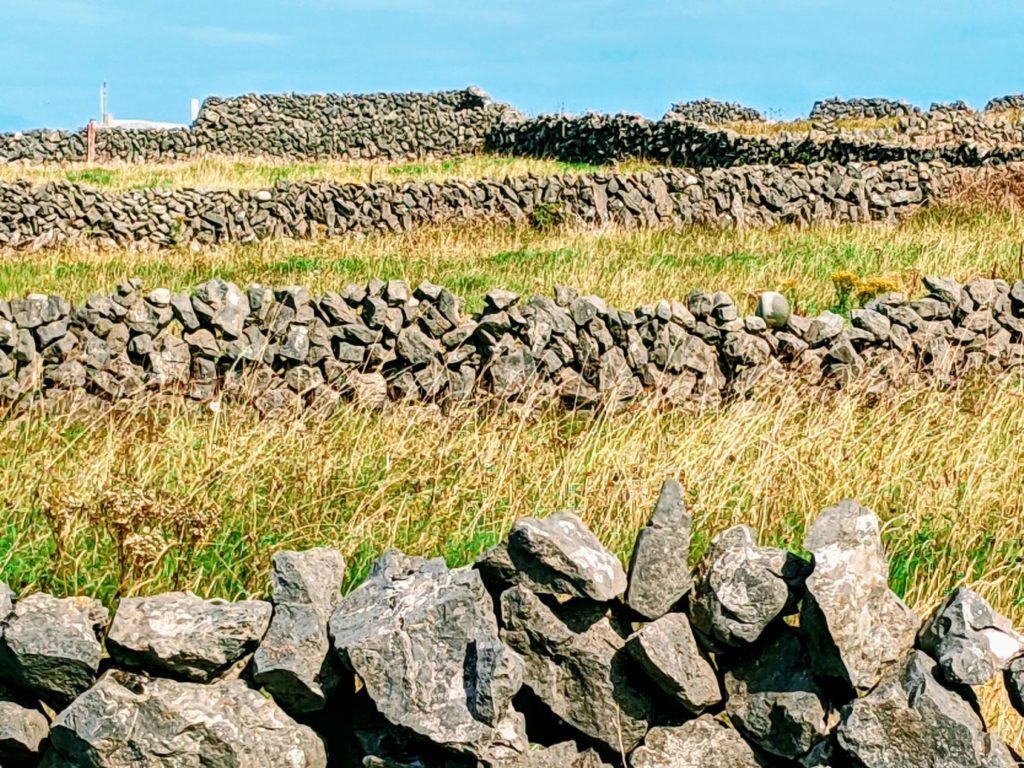
Stone walls aplenty
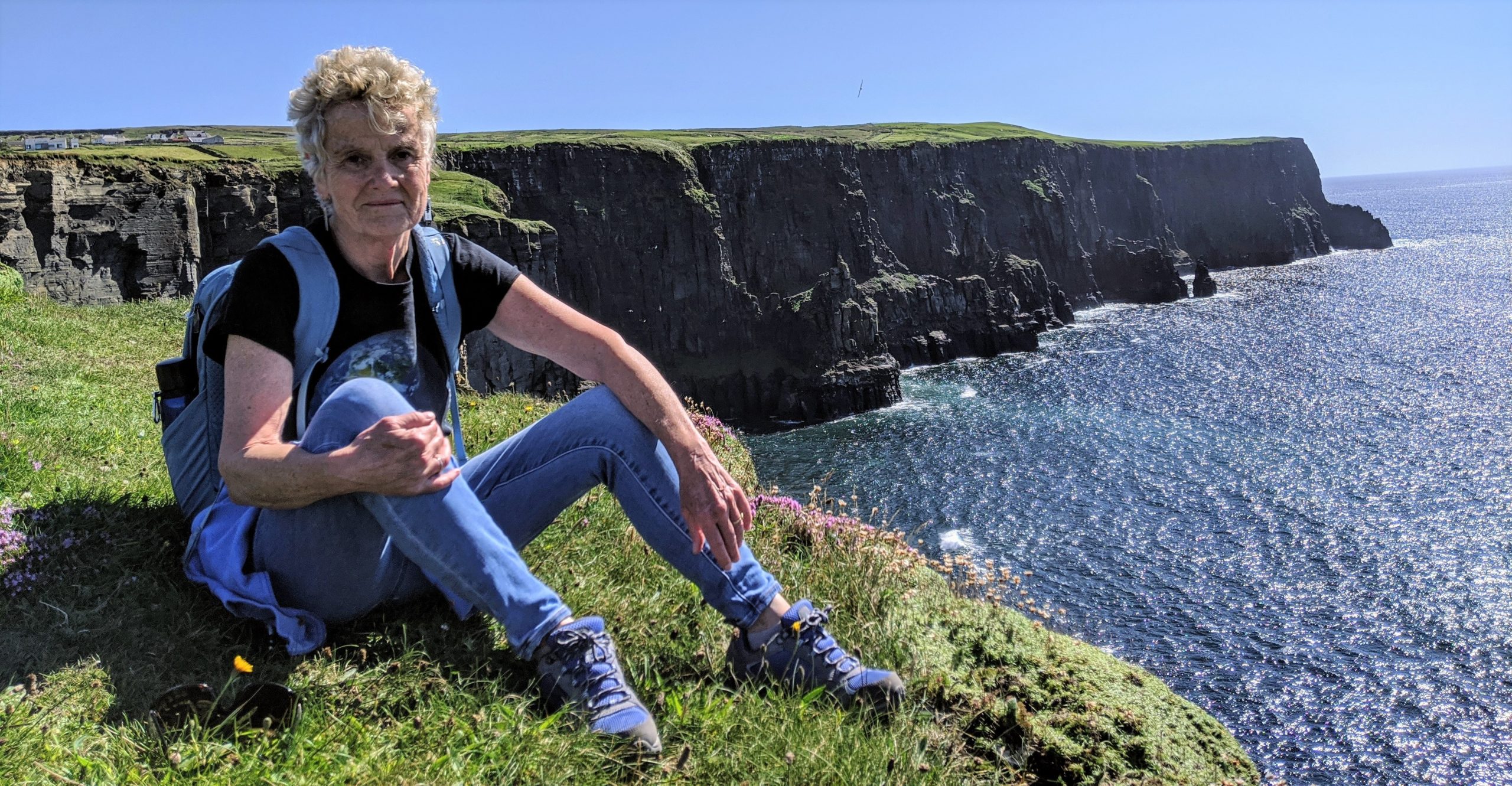
Reader Comments
So fun to see you and TJ together over yonder!!! Love your blogs – you place us exactly there, with literary ease a plenty.
Keep it coming and enjoy Portugal.
Happy Birthday, cuz!
xo, Kathy
Oh, this is so wonderful! How great to share the places you love, and also explore a new one! And excellent news on the COVID rates — I wish Americans weren’t so damned stubborn. Maybe I will get there yet…
A treasure to read. Hopefully 2022 will bring all 5 of us sibs together over there!
So rich … thank you for giving life to all that green and rock… such beauty and soul. Just maybe I’ll see you… I’ll pm you. 🙏❤️😊
Love the way you weave in history to accompany and explain your surroundings. I’m learning a lot my friend.
v
Loved learning all about knitting on the islands. As a knitter I have used many of the stitches you spoke of but never realized they had meaning… Cool!
So happy you and TJ got to spend the time together 😃
What a treasure it is to enjoy your experiences as if I was at your side feeling the chill of the wind on the coast or the temptation to buy as many warm sweaters as my credit card would allow to ward of the winter chill ahead. Such rich and interesting history brought to life in your writing. Thanks for sharing and have a wonderful trip to Portugal. Safe Covid free journey.
Marti
Thanks for the story and the info!!!
Wonderful. well written story as all your stories are. Makes one think they are there with you.
Wow, Deborah, wish we’d had your blog before our trip there rather than after!
So much we didn’t know, and not enough time there. But reading the blog certainly helped enrich the memory! Thanks!
Thanks for thoughts on aging. You read my mind.